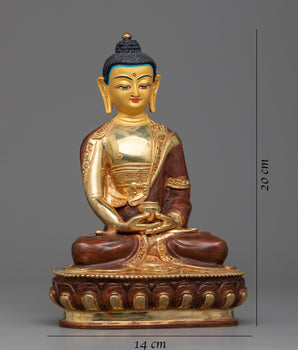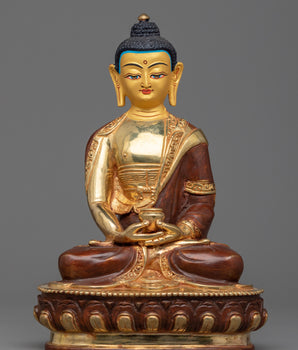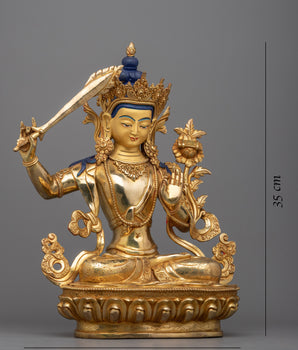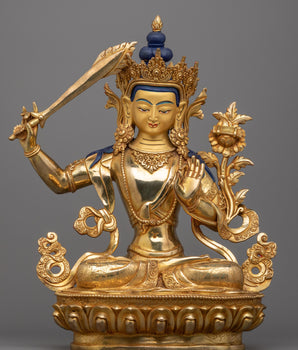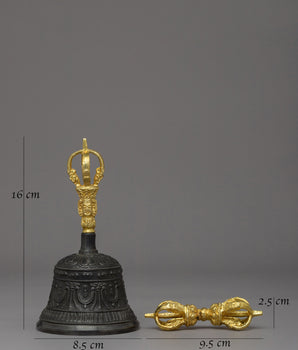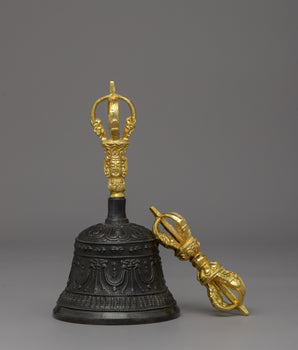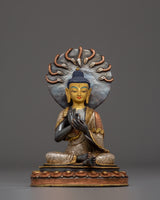
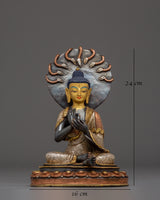
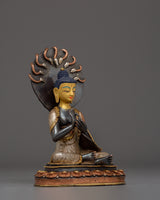
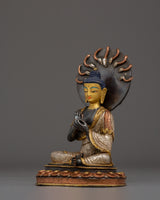
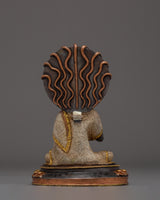
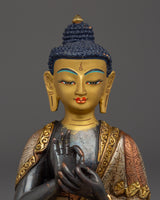
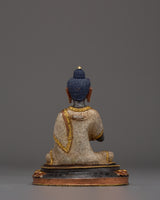
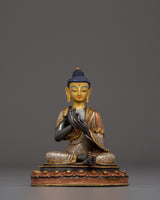

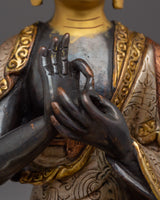
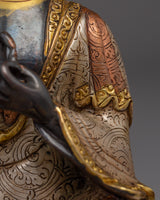
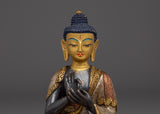
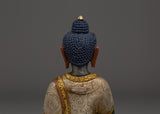
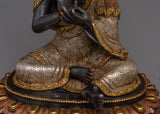
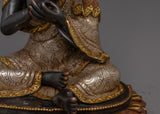
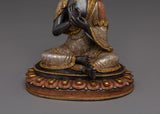
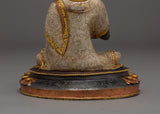
Buddhist Monk Nagarjuna Statue | Revered Philosopher Nagarjuna

100% AUTHENTIC

HANDMADE

FREE SHIPPING
Buddhist Monk Nagarjuna Statue | Tibetan Buddhist Master for Altar and Home Decor
-------------------------------------------
Size: 24cm(Height) x 16cm(Width)
Weight: 2.01kg
Materials: Oxidized Copper, Silver Plated, Gold Plated
-------------------------------------------
About Our Statue:
This Buddhist Monk Nagarjuna Statue is a magnificently handcrafted representation of one of the greatest Buddhist gurus and philosophers. This statue, which measures 24cm in height and 16cm in breadth and weighs 2.01kg, is made of oxidized copper and brilliantly plated in silver and gold. Nagarjuna is considered the founder of the Madhyamaka school of Mahayana Buddhism, known for his teachings on emptiness and wisdom. His presence in art and ritual artifacts represents deep knowledge and spiritual guidance.
The delicate intricacies of this statue demonstrate excellent craftsmanship. The oxidized copper gives his robes and ornaments a rich, antique appearance, while the silver and gold plating emphasize purity, illumination, and reverence. This spiritual piece is suitable for personal altars, meditation settings, or as an outstanding addition to Buddhist art collections.
Bring the blessings of wisdom and compassion into your house with this Buddhist Monk Nagarjuna Statue. It is ideal for enriching your altar, meditation practice, or home decor by connecting you with one of Buddhism's most significant masters while embracing the rich tradition of Tibetan craftsmanship.
Introduction to Nagarjuna Buddha
Two thousand years ago, Nagarjuna lived in India. The second part of the second century of the Christian period was the zenith of Nagarjuna. The Satavahana ruler Gautamiputra Yajnasri was friends with Nagarjuna at the time. He originated from Vidarbha in a prosperous Brahmin family. The Middle Way School, often known as the Madhyamaka school of philosophy, was founded by Nagarjuna. Typically, Nagarjuna is shown as a monk wearing orange and crimson robes. The two hands are frequently clasped together as a gesture of teaching. He stands out for two specific qualities. On the summit of the head is an ushnisha, which is the first. The second is a head-framing canopy or hood made of seven snakes. He explained the genuine meaning of sunyata through a four-point examination. He holds that no phenomenon or individual has a real, independent existence.
How do you take care of your statues?
• Place them at room temperature, avoiding direct sunlight.
• Make sure that the area where your statue is placed is entirely free of moisture and dust.
• Place it at the highest place on your altar after being consecrated by the Lama/monks. The best practice is to keep them covered inside a
glass cabinet.
• Do not use your bare hands or any objects with a rough surface to wipe the face. Directly touching objects with the bare hand can smudge the face, leaving scratches.






















